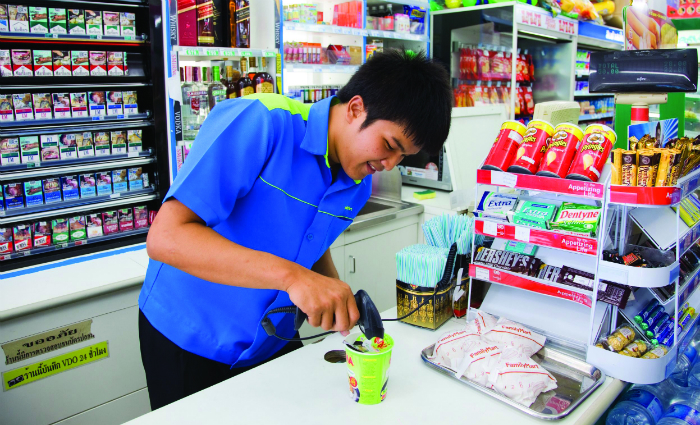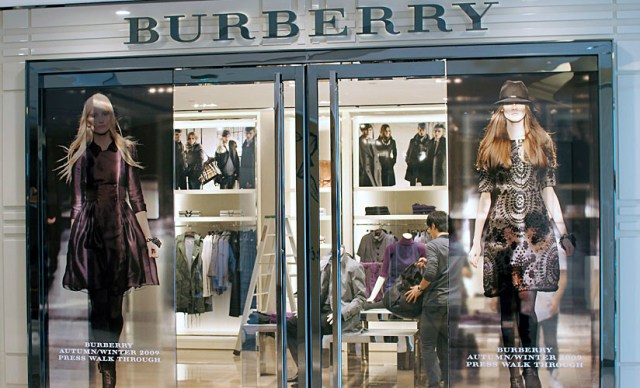
With market domination in the supermarket world so big there is little room for growth, the nation’s two biggest retailers Coles and Woolies have announced they are moving into the convenience store business, and that is good news for printers.
Convenience stores, or c-stores in retail parlance, are not places where customers buy large volumes of product; rather than buy a pack of 20 razor blades they are more likely to want a pack of two, and the move by the big two into c-stores is set to provide big opportunities for short run packaging printers that can provide the flexibility and speed that they require.
The move by Coles and Woolies is likely to be no small thing, in the UK for instance supermarket giant Sainsbury’s – which began c-store operations several years ago – announced that its c-store estate has now outnumbered its superstores for the first time.
And figures from retail analyst IGD show seven out of 10 shoppers now use both a supermarket and c-store in any month, with the UK convenience market set to rise by 30 per cent to £49bn ($89.7bn) by 2019 from its current value of £37bn ($67.7bn). The same growth trajectory is expected for Australia, in fact the news that the big two are going into c-stores means that figure is likely to be conservative.
Packaging printers and printers looking to get into packaging may be thinking ‘what has all this got to do with me?’ and the answer is ‘a lot’. That is because retailers want to cram as many grocery items as possible into retail units that are a fraction of the footprint of their larger stores – 300sqm and under versus 5000 to 10,000sqm for a typical supermarket. This means brands will be challenged to develop smaller formats so they can squeeze some 2000 items into the stores.
“Size matters,” Rob Sellers, director of shopper marketing agency Dialogue, told trade magazine The Grocer earlier this year. “If you can deliver a product that the retailer can store more of in a smaller space, you not only reduce logistical impact, you meet the needs of the convenience shopper.”
Two high-profile examples are Unilever’s compressed deodorant packs for its Lynx, Sure and Dove brands – the cans are half the size of the original, but contain the same amount of deodorant – and Robinsons Squash’d, a super concentrated 66ml squeezy pack that fits in the pocket and can be diluted with water to make up to 20 drinks.
And this is just the tip of the iceberg. A number of other brands are developing new products and pack formats that better address the needs of convenience operators.
But not everyone believes that the idea of cramming loads of smaller products into a smaller store is the best way to move forward. Phillip Adcock, managing director of Shopper Behaviour Xplained and author of Shoppology: The Science of Supermarket Shopping and a Strategy to Spend Less and Get More, believes that the entire supermarket model is broken and that their current approach to convenience retailing is misguided at best.
“The supermarket groups think shoppers want loads of choice and want lower prices, but I have copious amounts of evidence about how too much choice makes it harder to shop and people end up buying less, so when they talk about c-stores and cramming in as many variants as possible that is not what shoppers want, it is a red herring,” he says.
“C-store shoppers typically only want one item and often it is a distressed purchase, so they will go straight to the product that they want and completely ignore the other 1999 items in store.”
But Adcock concedes there are other factors in play besides squeezing as much choice as possible into a smaller footprint. He reports that demographic changes are also influencing the behaviour of convenience shoppers. With more people living on their own, and many not owning a car, they need more easy-to-transport single-serve items.
Fruitful findings
Interestingly there has been a similar trend for smaller packs of fruit in the US in recent months, with fruit brand CMI trialling mini grab’n’go flexible packs of cherries under the trading name Go-Go Fresh, specifically targeted at testing reactions from the nation’s growing convenience market.
And US-owned food giant Mondelez recently launched a number of resized products into the UK convenience market, as it has already done on home turf, including single-serve packs of Barny, Oreos and breakfast biscuit brand Belvita. It has also introduced more refill packs of some of its household name brands and smaller pack sizes of coffee. Industry experts say that flexible refill packs of products like coffee make much more sense in the c-store environment rather than traditional glass jars, which take up too much space.
Another key driver is demand for products that can be stacked on shelf more quickly and efficiently. Chip brand Quavers has tapped into this stackability trend by creating a multi-pack of its chips that can be stacked – it essentially comes in a brick-shaped wrap pack – and toilet roll brand Ora has been specifically designed so that it stacks on top of itself, thus taking up less shelf space.
And it is not just the symbol groups and the grocery multiples that are inspiring brands to explore new packaging formats. Discounters like Aldi and Lidl, which are rapidly growing their market share, have a need for packaging that sits well in their smaller format stores, as do the variety discounters and the dollar store groups, which also flourished during the post- GFC era.
Adcock says he is seeing a lot of evidence of c-store operators in particular issuing specific packaging demands of their suppliers. Part of that is so they can hit a particular price point. And part of that is to manipulate customers. The only way that customers can make judgements about a product, be it price or pack size, is when it is presented in context. So if you have only one size in a dollar or c-store people do not tend to realise that it is smaller and that they are possibly paying more per gram or millilitre.
People are not investing in volume – they are investing in more choice. Where a brand might once have had 10,000 of one box printed today it may have 1000 boxes printed in ten variants to have a little bit more bespoke for each product.
Although pack formats specifically developed for the convenience market are only just getting out of the starting blocks, some experts forecast that we might not be far from a tipping point, with a raft of these types of packs about to hit the market. Indeed, the FMCG behemoths are renowned for being reactive rather than proactive, so it only needs one company to take the lead to force the others to follow.
More work
Whichever way you cut it – and whenever this tipping point eventually occurs – Adcock, for one, believes that the convenience trend ultimately means more work for packaging printers, “because the big retailers are pathologically obsessed with volume; everything they sell is about volume,” he says.
“So if you put 30 Belvita biscuits in a box that is only one box that you need to print. But if you take those 30 Belvita biscuits out of that box and into a single-serve format then you need 30 packs. So it is more work and you could argue that it is shorter runs.”
Back from overseas
It could also mean that some of the packaging work that has migrated overseas in recent years will start heading back to Austrailan shores soon, argues Adcock. “Some of the packaging might currently be made overseas, but if you are doing shorter runs it makes it less economically viable to do it abroad because you cannot amortise the transport costs to get them back to Australia. So there could be an opportunity for printers to market themselves as small pack, short run specialists and fill a niche that the huge Indonesian or Chinese printers cannot.”
However this drive for products that better suit the convenience format manifests itself, it is clear that Australian printers could be well placed to cash in on this trend. With the slowdown of supermarket sales and new superstore developments, there is a huge opportunity for astute suppliers to cash in on the convenience growth.
Quite simply, suppliers need to go where the growth is. And anyone with an eye can see that growth, particularly in the metro cities of Australia, is in high density urban development where singles, young professionals and downsizers are moving in droves, for convenience and lifestyle. Those people do not cook a meal for a family of five every evening, they live life on the go, which is why Coles and Woolies are moving in.
Savvy short-run small format packaging printers have a significant opportunity in front of them.
Comment below to have your say on this story.
If you have a news story or tip-off, get in touch at editorial@sprinter.com.au.
Sign up to the Sprinter newsletter

